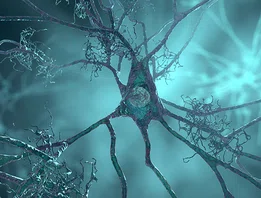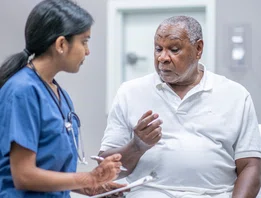


Brushing the dark hair from his eyes, a young Andrew Lee inched closer to the black-and-white TV screen. Wide-eyed, he watched as seemingly weightless Neil Armstrong landed with a soft thud on the moon’s surface. As the American flag was planted, Lee’s next goal in life became clear—he would become an astronaut.
“Like every other kid in America, I wanted to become an astronaut after the first moon landing in 1969,” laughed Lee, now the Herb and Jean Lyman Centennial Chair in Ophthalmology at the Blanton Eye Institute. “However, I was too short, so my goals shifted.”
Inspired by his physician parents and an influential high school biology teacher, Lee set his sights on medicine. But through the years of building an award-winning clinical research career in neuro-ophthalmology, his interest in space travel never waned.
Space Flight-Associated
Neuro-ocular Syndrome
Luckily, an opportunity at Houston Methodist offered him a chance to pursue this lifelong passion.
“After coming to Houston Methodist in 2009, I became involved in researching a condition known as Space Flight-Associated Neuro-ocular Syndrome (SANS),” Lee explained. “I authored the original paper that described the condition, which is characterized by increased pressure in the head and eyes as fluid shifts upward during microgravity.”
While the exact cause and risk-factors for SANS are still unknown, the condition affects about 70% of astronauts who spend more than six months at a time in space, causing blurred vision, far-sightedness, and swelling of the optic nerve. These symptoms can linger even after astronauts return to Earth, impacting terrestrial quality of life and potential for future space travels.
Lee attributed some of the unknowns of this mysterious condition to the difficulty of conducting relevant research. For example, SANS only occurs in microgravity, making it hard to evaluate the condition. Researching the condition from the extra-terrestrial perspective is also limited due to a lack of experience in safely performing medical procedures in space. Additionally, the sample size, or number of affected astronauts, is small.
Lee (front center) pictured with biology teacher, Mr. Doerr (far left), and high school classmates. Mr. Doerr inspired Lee to pursue medicine. His memory lives on in Lee’s passionate training and mentorship to Houston Methodist residents, of which Lee hopes to pay the support forward. “I consider training the next generation of ophthalmologists a critical mission,” he said.
I’m extremely interested in the terrestrial applications of space flight medicine. It’s been an exciting time understanding disease implications on both space travel and terrestrial health.
Andrew G. Lee, MD
Despite these challenges, Lee remains motivated to better understand the causes of SANS. His continued research is critical as we near closer to NASA’s lengthy planned trips to the moon and Mars. Preparation to combat SANS is key, as astronauts must receive medical treatment on board during the Mars voyage because they are too far away to be transported back to their home planet.
Thus, Lee and NASA colleagues have been developing a miniaturized wearable goggle that can noninvasively measure sharpness of vision and track intracranial pressure. The goggle will utilize virtual reality and artificial intelligence technology to maintain astronaut eye and brain health during long space trips.
Houston Methodist’s collaboration with NASA makes Lee’s research possible, affording him the opportunity to view real-time data on astronaut eye health from both Houston’s Johnson Space Center and the International Space Center.
“Specialized equipment at NASA facilities allows us to image the eye through real-time pictures and ultrasounds so we can see who is developing SANS, consult in treating the condition, and gather data for clinical research,” said.
Beyond the eye, Lee has also published research on other space flight-associated topics, such as the future of personalized medicine for astronauts and NASA’s impact on terrestrial medical technologies, including advancements in cancer detection, surgical robots and pacemakers.
“I’m extremely interested in terrestrial applications of space flight medicine,” Lee added. “It’s been an exciting time understanding disease implications on both space travel and terrestrial health.”
Looking back on his childhood, Lee never would have imagined he would become an internationally recognized expert in SANS and a NASA consultant, but now he has the best of both worlds combining his passions for clinical research and space travel.
Lee as a child growing up in the U.S. Virgin Islands. As physician immigrants, Lee’s parents were stationed in various medically underserved areas throughout Lee’s childhood. “My parents worked for the joy of serving others,” he said
Callie Rainosek Wren, MS
April 2025
Related Articles









